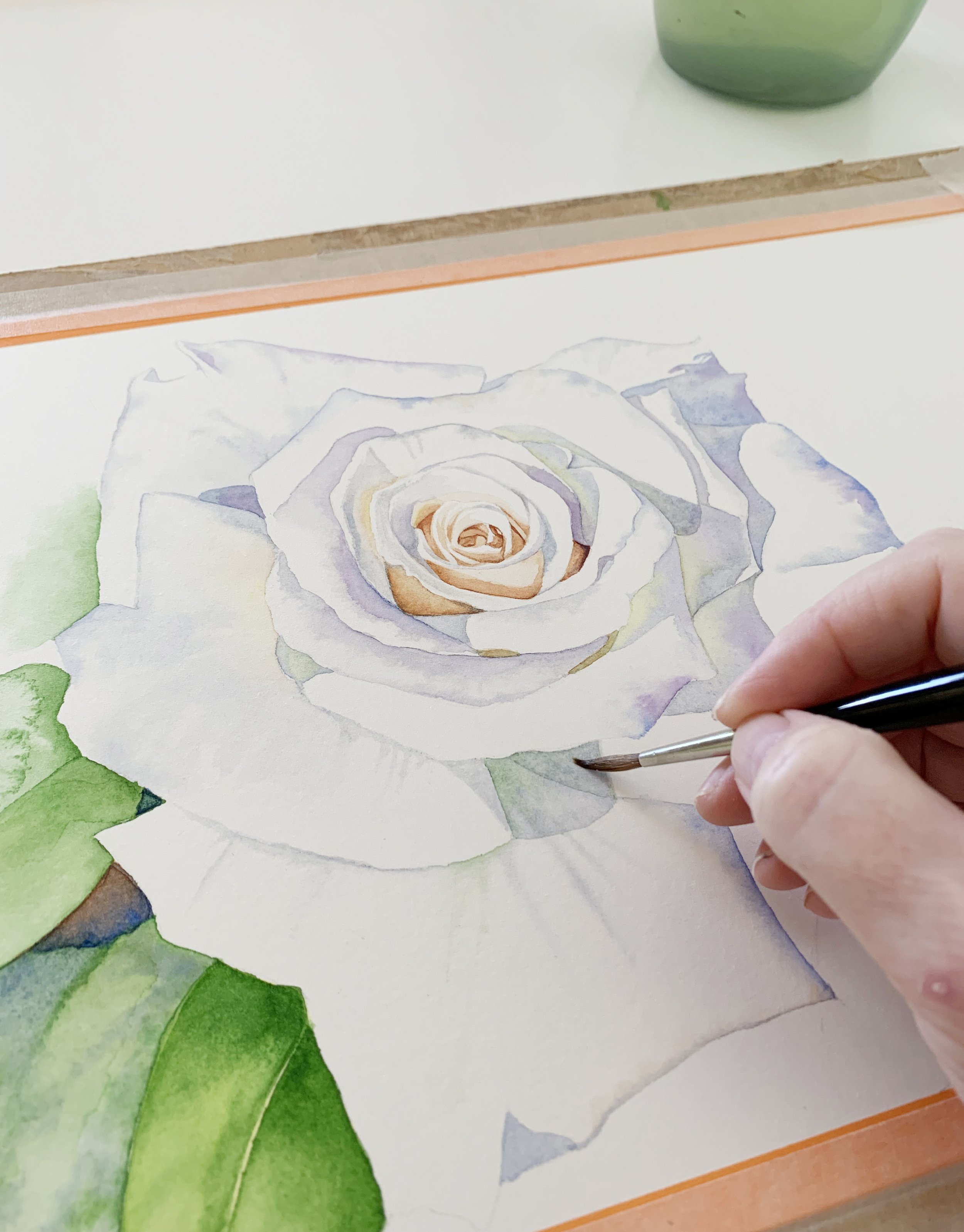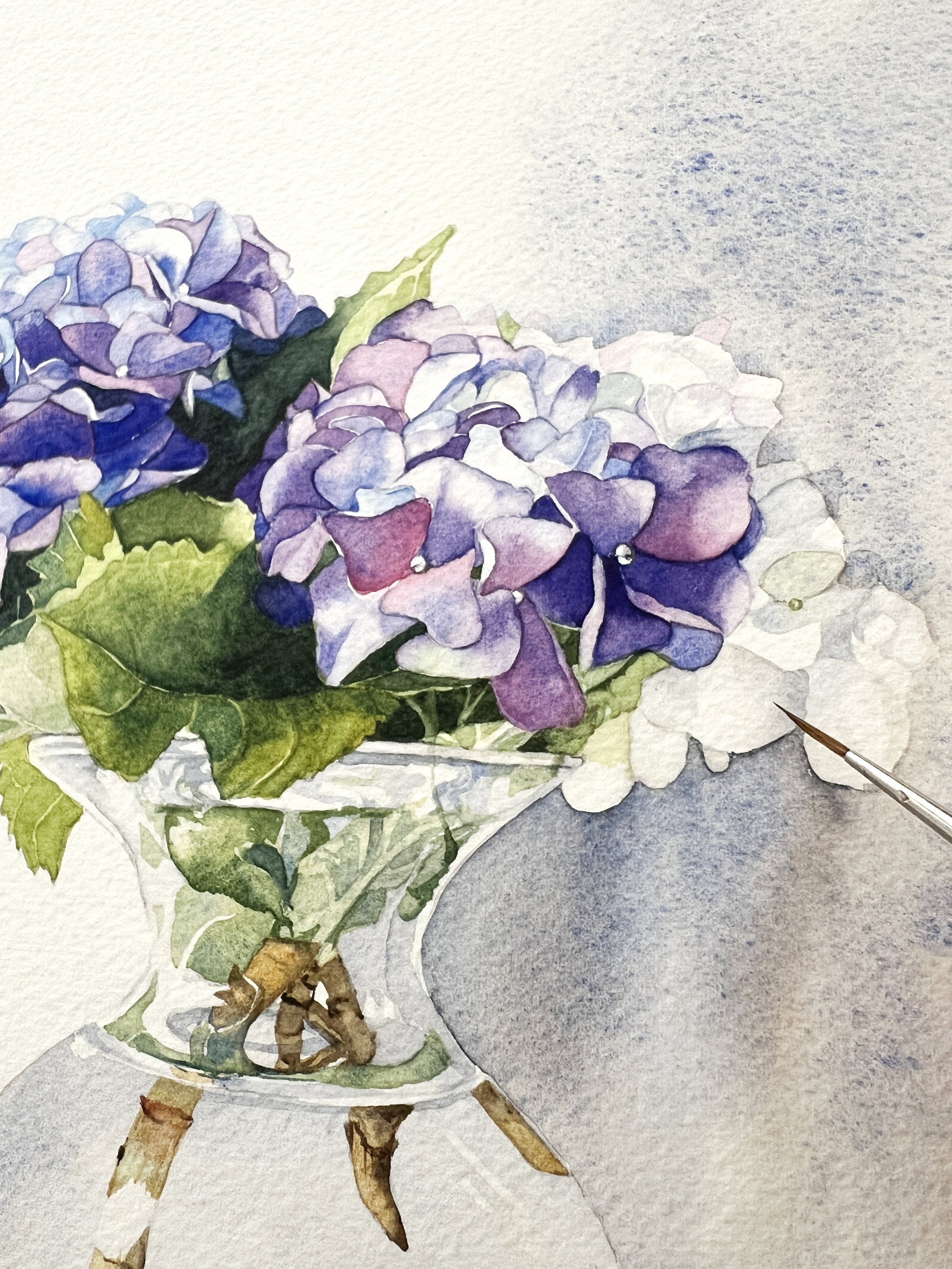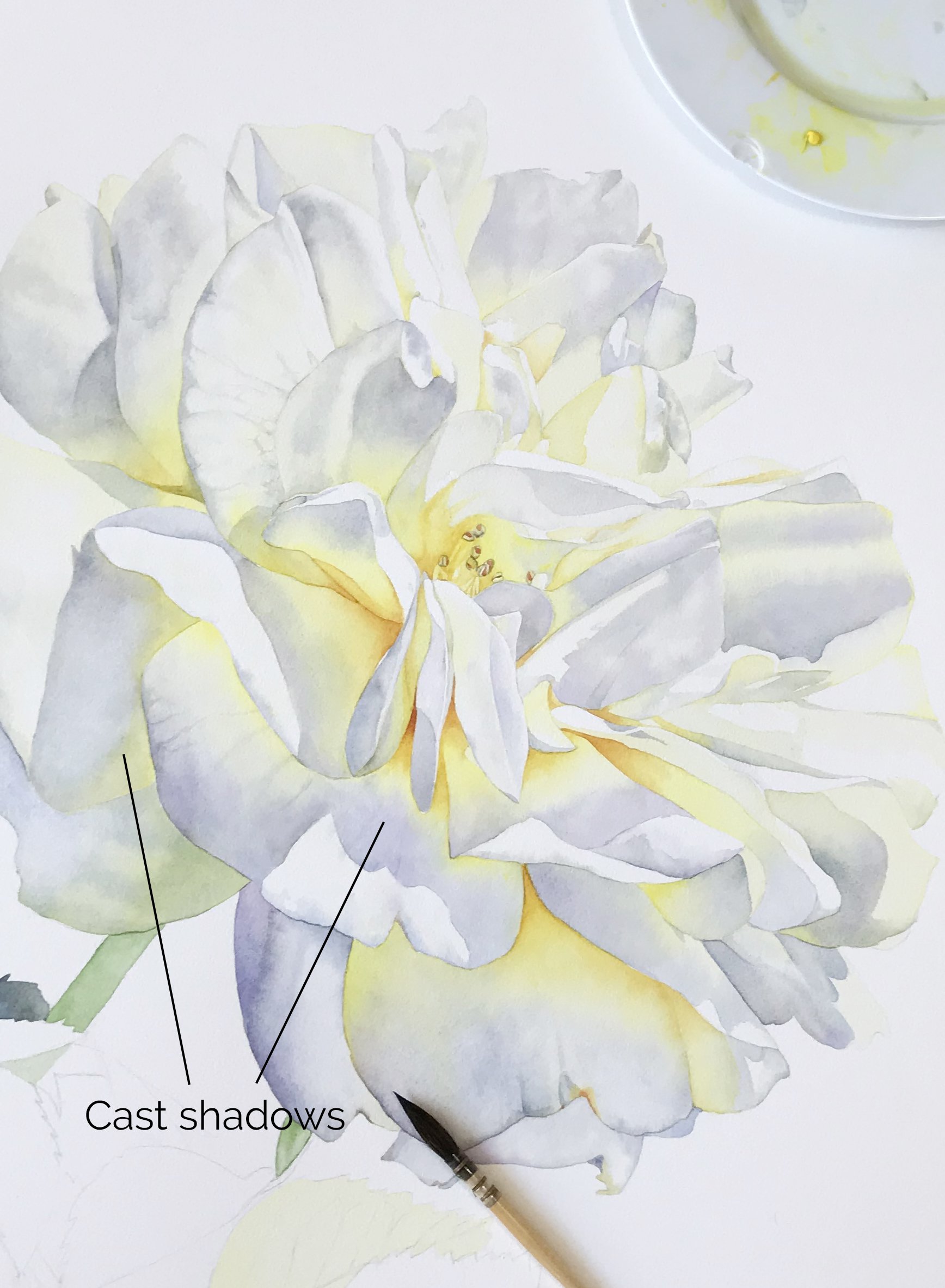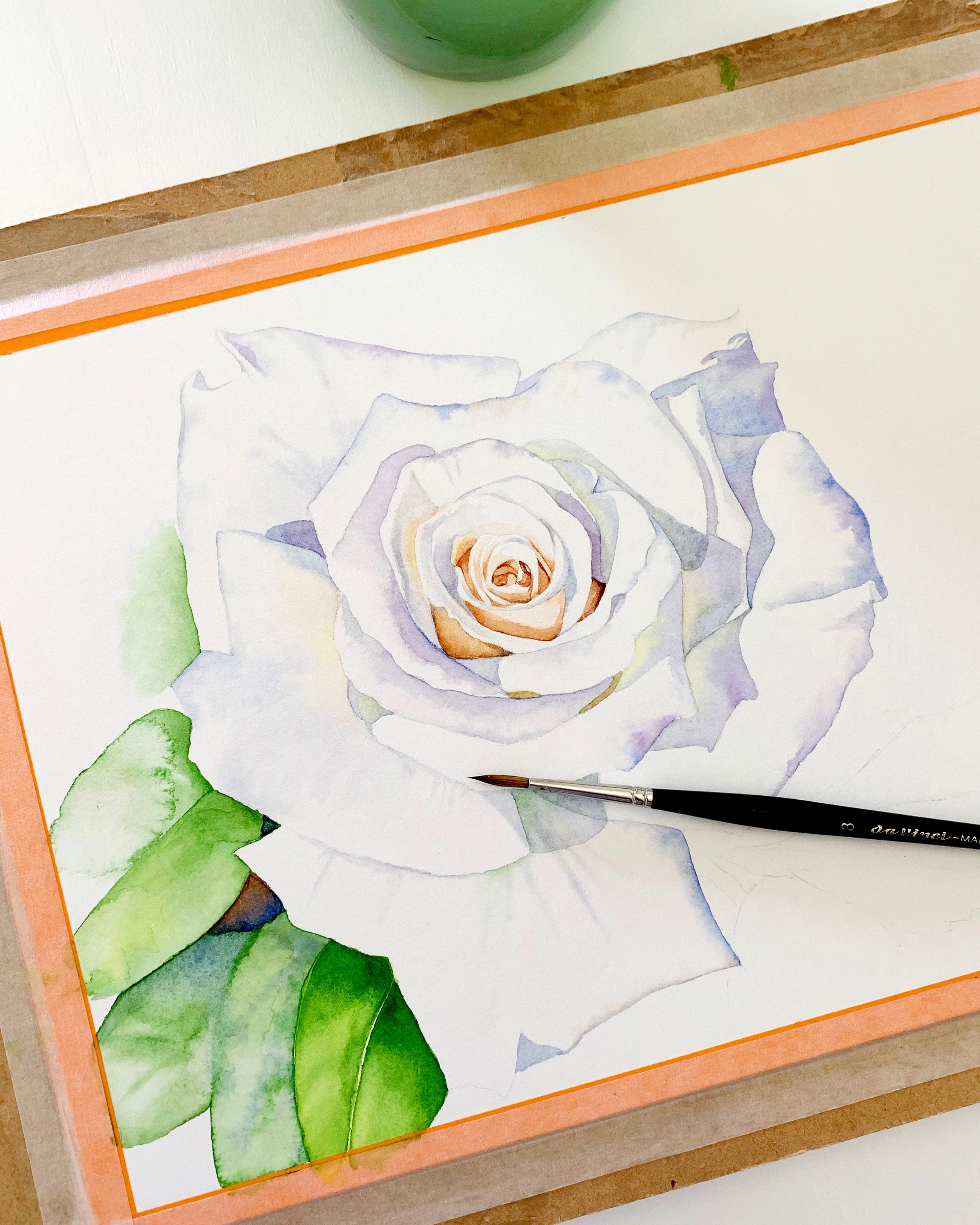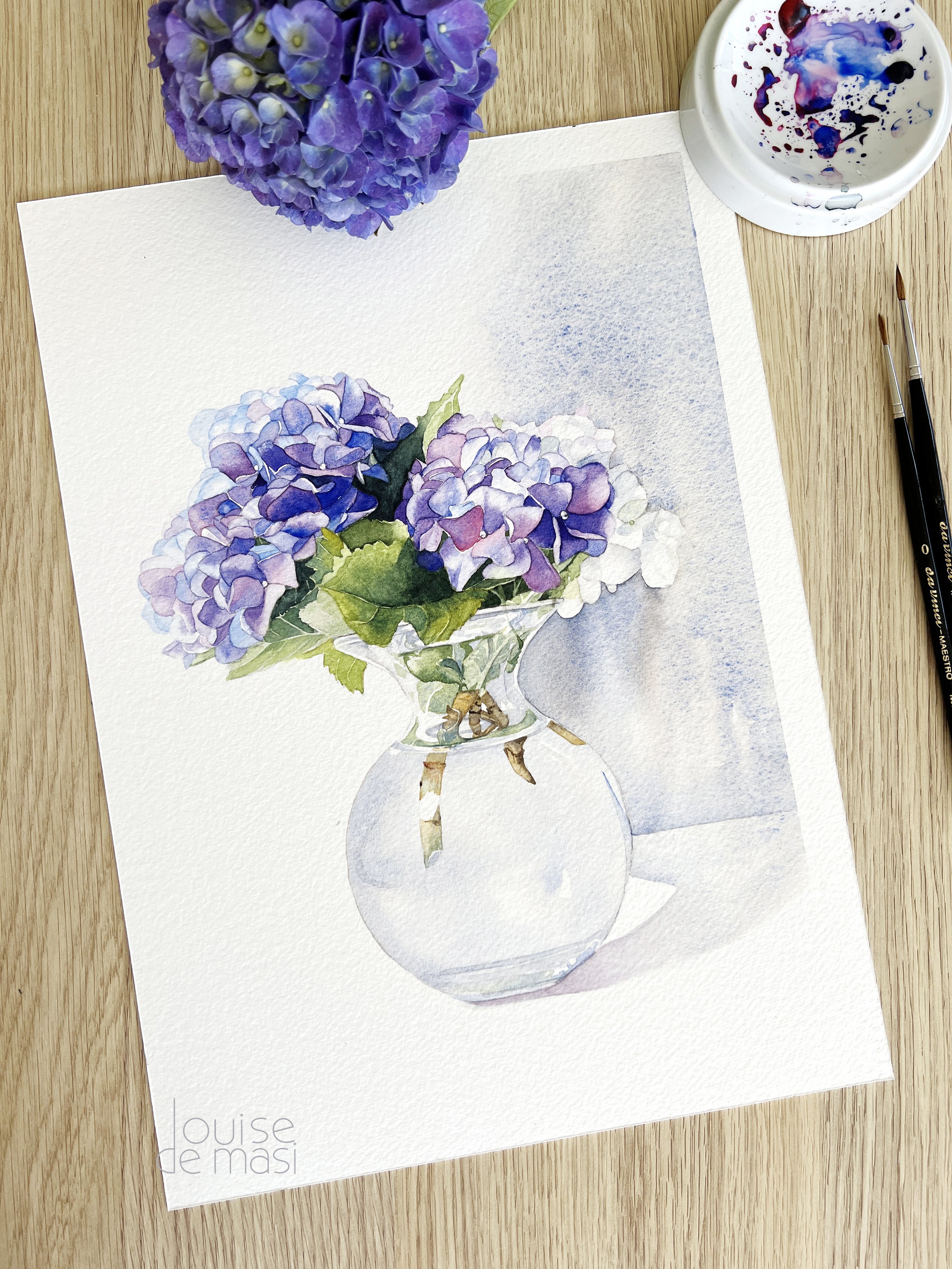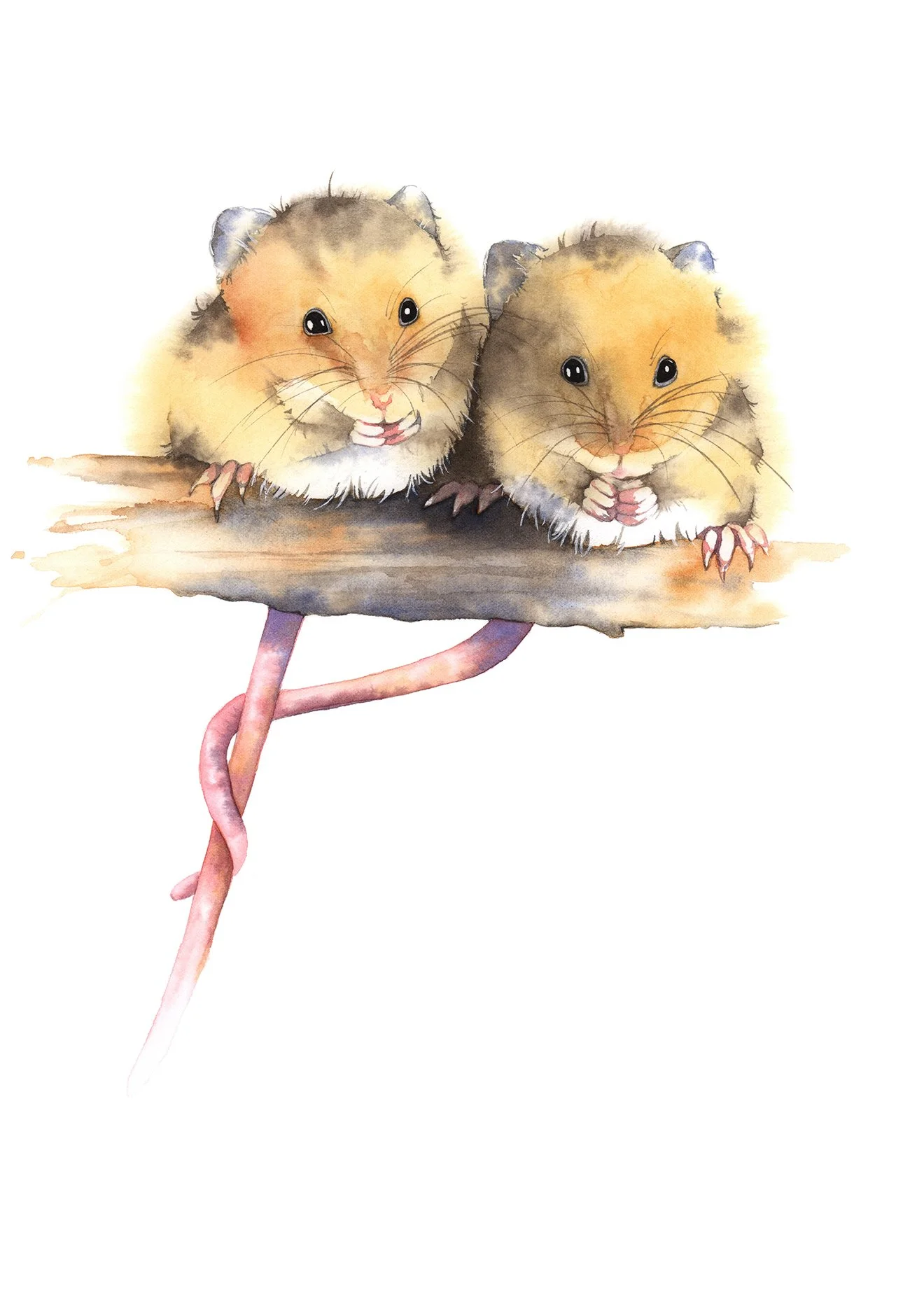The Subtle Art of Painting White Flowers in Watercolour
Painting white flowers and other white objects in watercolour might seem like a paradox - after all, watercolour painters rely on the white of the paper rather than white paint. Since watercolour relies on transparency, we don’t actually paint white - we suggest it by carefully managing shadows and colour variation. If done correctly, white objects can appear luminous and three-dimensional, rather than flat and lifeless. But this is precisely what makes it such a fascinating and rewarding challenge!
When I paint a white subject, such as a delicate rose, I focus on shadows, subtle temperature shifts, and gentle transitions to define the form and create a sense of depth.
For this blog post, I will show you how I paint white watercolour flowers, but I have painted many white objects over time. You can find watercolour tutorials on this topic on my YouTube channel.
Observing White in Nature
The first step in painting white objects is to really observe them. White is rarely pure white. It picks up reflected colours from its surroundings, and shadows cast on white surfaces can contain hints of blue, grey, violet, or yellow and warm earth tones.
Look carefully at your white subject and you'll see other colours.
Before I start painting, I study my reference photo carefully, noting the subtle variations in colour and the direction of the light source.
Choosing the Right Paper
Since I rely on the white of the paper for my highlights, I always use high-quality paper with a bright, clean white surface. For one of my earlier white rose painting, I used the white paper of Arches watercolour board, which is thick and doesn’t require stretching. If you're working on traditional watercolour paper, I recommend stretching it beforehand to prevent buckling when applying washes. You can check out this link for my stretching tips and this blog post about my favourite watercolour paper.
This rose was painted on Arches watercolour board- however it's not manufactured any more unfortunately.
Building Form with Shadows
To create the illusion of white flowers, I must paint the shadows that define its shape. I usually start by mixing a delicate grey using my favourite combination of French Ultramarine and Burnt Sienna. This gives me a lovely neutral grey that can be warmed up or cooled down as needed. I keep my mixture very diluted because I want my shadows to be light and transparent. Other blues like Cobalt Blue work as well, but I am often drawn to French Ultramarine. Find a mix you like and experiment with it!
Cool grey mixed from Burnt Sienna and French Ultramarine.
When painting the petals of white flowers, I might wet the area first and then softly apply my shadow colour along the edges where two petals meet. The water on the paper allows the paint to diffuse gently, creating soft, natural-looking shadows.
Painting a soft grey shadow where one petal meets another.
This technique is essential for keeping the petals looking soft and delicate rather than harsh and flat.
I used this technique here on these white petals of a hydrangea bloom.
Adding Colour Variations
Shadows are rarely just one colour. To create more visual interest, I might drop in hints of Winsor Violet into my wet shadows. This introduces a subtle coolness that contrasts beautifully with the warmth of the white areas.
Here I've dropped in some Winsor Violet along with some Phthalo Blue into the grey areas to add interest.
In some cases, I also add a touch of yellow, like Winsor Lemon to reflect a bit of surrounding light and warmth. These small variations make the painting feel more lifelike and dynamic.
Keeping the Edges Soft
The cast shadows on the petals of this rose are both grey and yellow.
One of the biggest challenges in painting white objects is maintaining soft edges, especially in areas where light gradually transitions into shadow. To achieve this, I use a damp brush to soften the edges of my shadows immediately after applying them. This technique helps the transitions look seamless and natural.
For cast shadows - like the ones where petals overlap - I use slightly darker mixtures, but still keep the edges soft. A liner brush is useful for adding precise details, such as subtle veins on the petals or fine shadow lines where petals curl.
Cast shadows are just as important as form shadows. They anchor the object in space and should also include multiple hues. For instance, a cast shadow on a white teacup might start with a cool blue-gray, but transition into a slightly warmer tone near the edges where light reflects into it.
Enhancing Depth with Contrast
White objects gain their luminosity through contrast. Once my initial washes are dry, I evaluate my painting and deepen the shadows in key areas to enhance the sense of depth. I might mix in a bit more Burnt Sienna to warm up certain areas or strengthen the French Ultramarine for a crisper, cooler shadow.
The centre of this rose was painted with Gold Ochre and Burnt Sienna.
I also make sure that the darkest areas - such as where the petals disappear into the centre of the rose - are rich and deep. For these areas, I might use a mix of Burnt Sienna and Sap Green, which creates a muted earthy tone that recedes into the background.
Take a Step Back
Once the entire subject is painted, I take a step back and assess the balance of light and shadow. I might add an extra glaze over certain areas to deepen the contrast or reinforce a soft edge with a damp brush. These final touches bring everything together, ensuring that the white object retains its glowing, luminous quality.
Most of the petals on this white rose are simply the white of the paper. The rose comes to life through careful observation of subtle colour shifts and the shapes created by cast shadows.
Now you have the tools to painting white flowers — time to experiment!
Painting white watercolour flowers requires a delicate touch, careful observation, and an understanding of how shadows and colours interact. By using soft washes, gentle transitions, and strategic colour variations, I can create the illusion of white while keeping my painting fresh and vibrant.
So next time you paint a white subject, embrace the subtle shifts in tone and colour it’s these details that bring your painting to life!
Happy painting,
Louise
If you are interested in learning to paint in watercolour, I have hundreds of online, voiced over watercolour tutorials for all skill levels.

